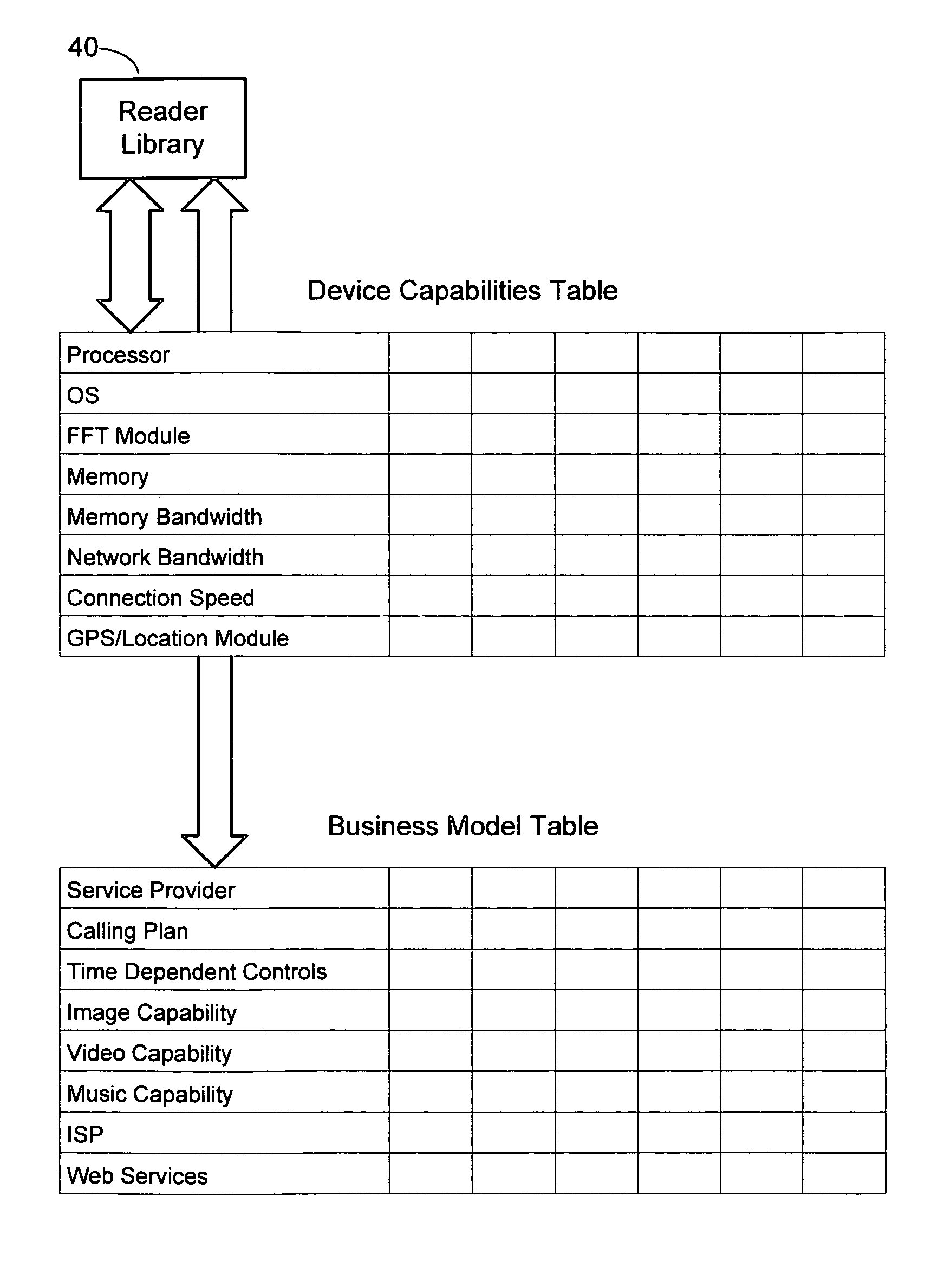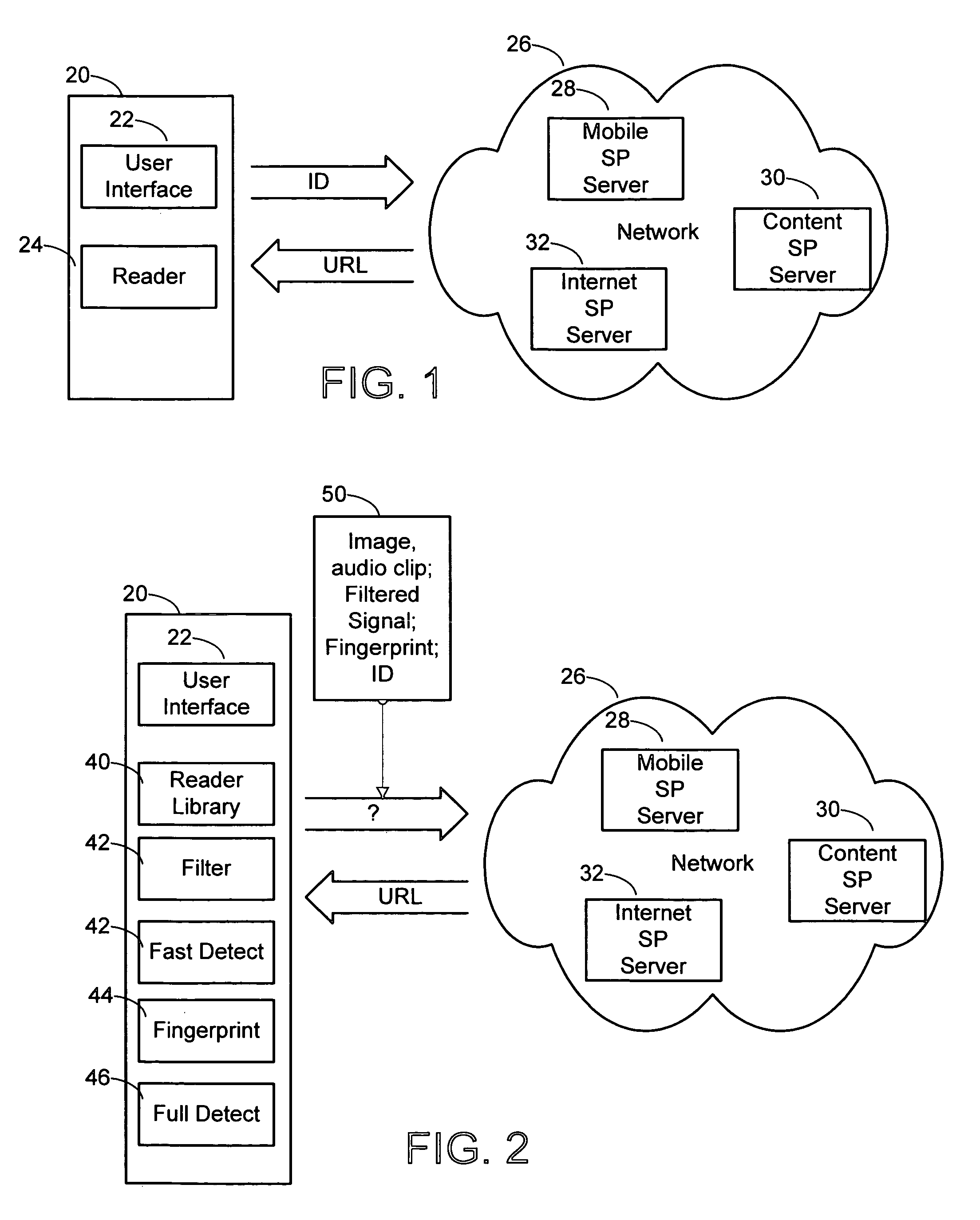Fast signal detection and distributed computing in portable computing devices
a portable computing and signal detection technology, applied in the field of signal processing and distributed computing, can solve the problems of multimedia signal processing, a major drain on the computing resources of a mobile phone, and still significant strain on the computing power of a small hand-held devi
- Summary
- Abstract
- Description
- Claims
- Application Information
AI Technical Summary
Benefits of technology
Problems solved by technology
Method used
Image
Examples
Embodiment Construction
[0021]FIG. 1 is a diagram illustrating a mobile device handset 20 and its communication with a network. The handset includes a computing platform, including a processor, RAM, and persistent storage. On this platform, the handset processor executes programming instructions in functional modules on the device. While a typical handset may have many modules, this particular example shows a user interface 22 and a reader 24.
[0022]The user interface controls basic input / output functions, including receiving input from the handset's control keys, and providing output via a display and audio output device. The reader 24 processes multimedia input, such as frames of video, still images, and / or audio streams.
[0023]For the purpose of illustrating the operation of the computing platform of our mobile computing device architecture, we focus on the application of “connected content.” Connected content refers to associating an action with content items. For example, the reader receives a content i...
PUM
 Login to View More
Login to View More Abstract
Description
Claims
Application Information
 Login to View More
Login to View More - R&D
- Intellectual Property
- Life Sciences
- Materials
- Tech Scout
- Unparalleled Data Quality
- Higher Quality Content
- 60% Fewer Hallucinations
Browse by: Latest US Patents, China's latest patents, Technical Efficacy Thesaurus, Application Domain, Technology Topic, Popular Technical Reports.
© 2025 PatSnap. All rights reserved.Legal|Privacy policy|Modern Slavery Act Transparency Statement|Sitemap|About US| Contact US: help@patsnap.com



